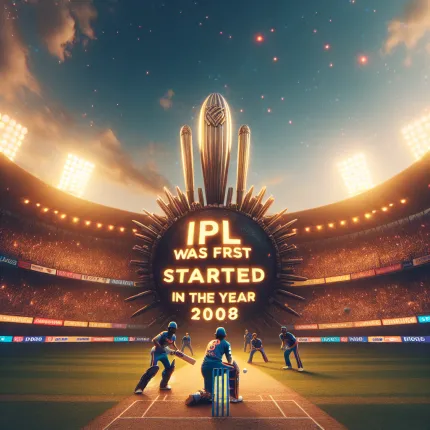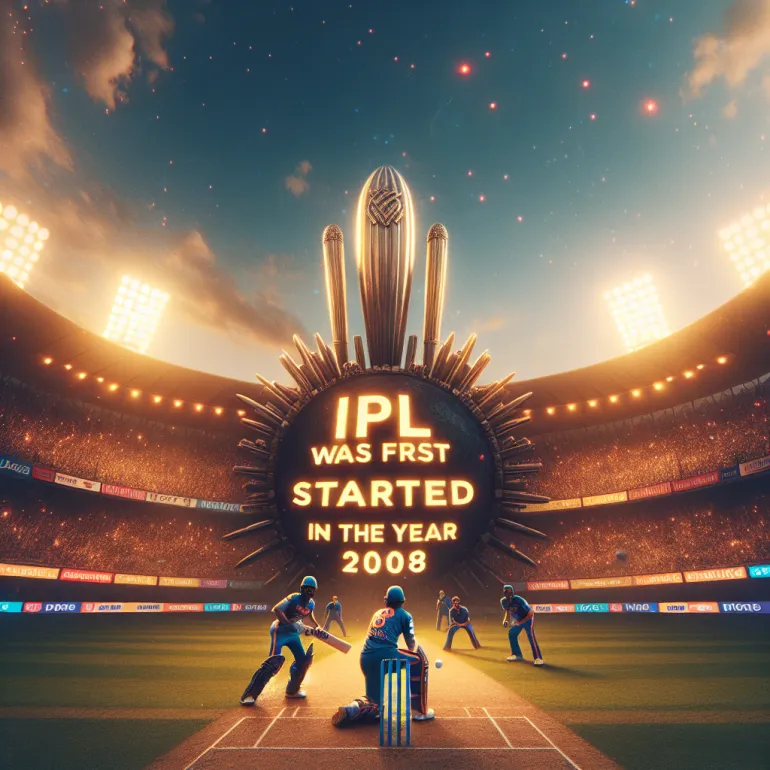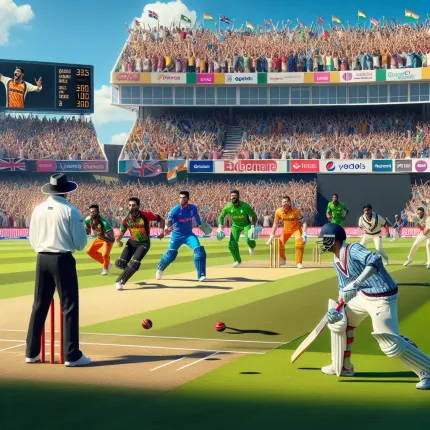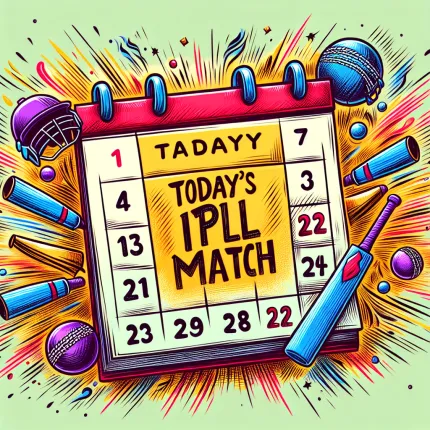
The Indian Premier League (IPL) has become one of the most celebrated and lucrative cricket tournaments globally, captivating millions of fans with its blend of sports and entertainment. But when did this cricketing extravaganza first begin? This article delves into the origins of the IPL, exploring its inception, the factors that led to its creation, and its impact on the world of cricket.
The Genesis of the IPL
The IPL was first introduced in 2008, marking a significant turning point in the history of cricket. The Board of Control for Cricket in India (BCCI) announced the launch of the IPL on September 13, 2007, with the inaugural season commencing on April 18, 2008. The tournament was conceived as a Twenty20 (T20) cricket league, a format that had gained immense popularity due to its fast-paced and entertaining nature.
The Vision Behind the IPL
The idea of the IPL was inspired by the success of domestic T20 leagues in other countries, particularly the English county cricket's Twenty20 Cup and Australia's Big Bash League. The BCCI aimed to create a similar league that would not only promote cricket in India but also provide a platform for young talent to showcase their skills alongside international stars.
- To capitalize on the growing popularity of T20 cricket.
- To create a commercially viable cricket league.
- To provide a platform for domestic players to gain exposure.
- To attract global cricketing talent to India.
The First Season of the IPL
The inaugural season of the IPL in 2008 was a resounding success, setting the stage for what would become an annual cricketing spectacle. The tournament featured eight franchises representing different Indian cities, each owned by prominent business figures and celebrities. The teams included:
- Chennai Super Kings
- Delhi Daredevils (now Delhi Capitals)
- Kings XI Punjab (now Punjab Kings)
- Kolkata Knight Riders
- Mumbai Indians
- Rajasthan Royals
- Royal Challengers Bangalore
- Deccan Chargers (now defunct)
Key Highlights of the 2008 Season
The first match of the IPL was played between Kolkata Knight Riders and Royal Challengers Bangalore at the M. Chinnaswamy Stadium in Bangalore. Brendon McCullum of Kolkata Knight Riders set the tone for the tournament with a blistering knock of 158 not out, which remains one of the most memorable innings in IPL history.
The Rajasthan Royals, led by the charismatic Shane Warne, emerged as the champions of the inaugural season, defeating Chennai Super Kings in a thrilling final. The success of the first season was a testament to the league's potential, both in terms of viewership and commercial success.
The Impact of IPL on Cricket
The IPL has had a profound impact on the game of cricket, influencing various aspects of the sport both on and off the field. Some of the key impacts include:
Commercialization and Financial Growth
The IPL has transformed cricket into a commercially lucrative sport, attracting significant investments from sponsors, broadcasters, and franchise owners. The league's brand value has grown exponentially, with the 2023 season estimated to be worth over $6 billion. This financial success has had a ripple effect, increasing player salaries and providing financial stability to domestic cricketers.
Globalization of Cricket
The IPL has played a crucial role in globalizing cricket, attracting players from various countries to participate in the league. This international exposure has not only enhanced the quality of cricket but also fostered cultural exchange and camaraderie among players from different backgrounds.
Development of Young Talent
One of the primary objectives of the IPL was to nurture young Indian talent by providing them with a platform to compete against the best in the world. Over the years, the league has been instrumental in discovering and developing numerous Indian cricketers who have gone on to represent the national team, such as Jasprit Bumrah, Hardik Pandya, and Rishabh Pant.
Innovations in Cricket
The IPL has been a breeding ground for innovation in cricket, introducing new strategies, playing styles, and technologies. The league has popularized concepts such as strategic timeouts, player auctions, and the use of technology for decision-making, which have been adopted by other cricketing tournaments worldwide.
Challenges and Criticisms
Despite its success, the IPL has faced its share of challenges and criticisms. Some of the notable issues include:
Match-Fixing and Corruption
The league has been marred by allegations of match-fixing and corruption, with several high-profile cases coming to light over the years. These incidents have raised concerns about the integrity of the tournament and prompted the BCCI to implement stricter regulations and monitoring mechanisms.
Player Burnout and Scheduling Conflicts
The demanding schedule of the IPL, coupled with international commitments, has led to concerns about player burnout and injuries. The league's timing often clashes with international tours, leading to conflicts between national boards and franchise owners over player availability.
Commercialization vs. Tradition
Critics argue that the commercialization of cricket through the IPL has overshadowed the traditional formats of the game, such as Test cricket. The focus on entertainment and revenue generation has led to concerns about the erosion of cricket's core values and traditions.
The Future of the IPL
As the IPL continues to evolve, it faces both opportunities and challenges in maintaining its status as a premier cricketing league. The introduction of new teams, expansion into new markets, and the integration of advanced technologies are some of the avenues being explored to enhance the league's appeal.
Moreover, the IPL's success has inspired the creation of similar T20 leagues in other countries, such as the Pakistan Super League (PSL), Big Bash League (BBL), and Caribbean Premier League (CPL). These leagues have contributed to the global growth of T20 cricket, further solidifying the format's popularity.
Conclusion
The Indian Premier League, since its inception in 2008, has revolutionized the world of cricket, blending sports with entertainment and creating a global phenomenon. Its impact on the commercialization, globalization, and development of cricket is undeniable, making it a pivotal force in shaping the future of the sport. While challenges remain, the IPL's ability to adapt and innovate will likely ensure its continued success and influence in the years to come.
As fans eagerly await each new




